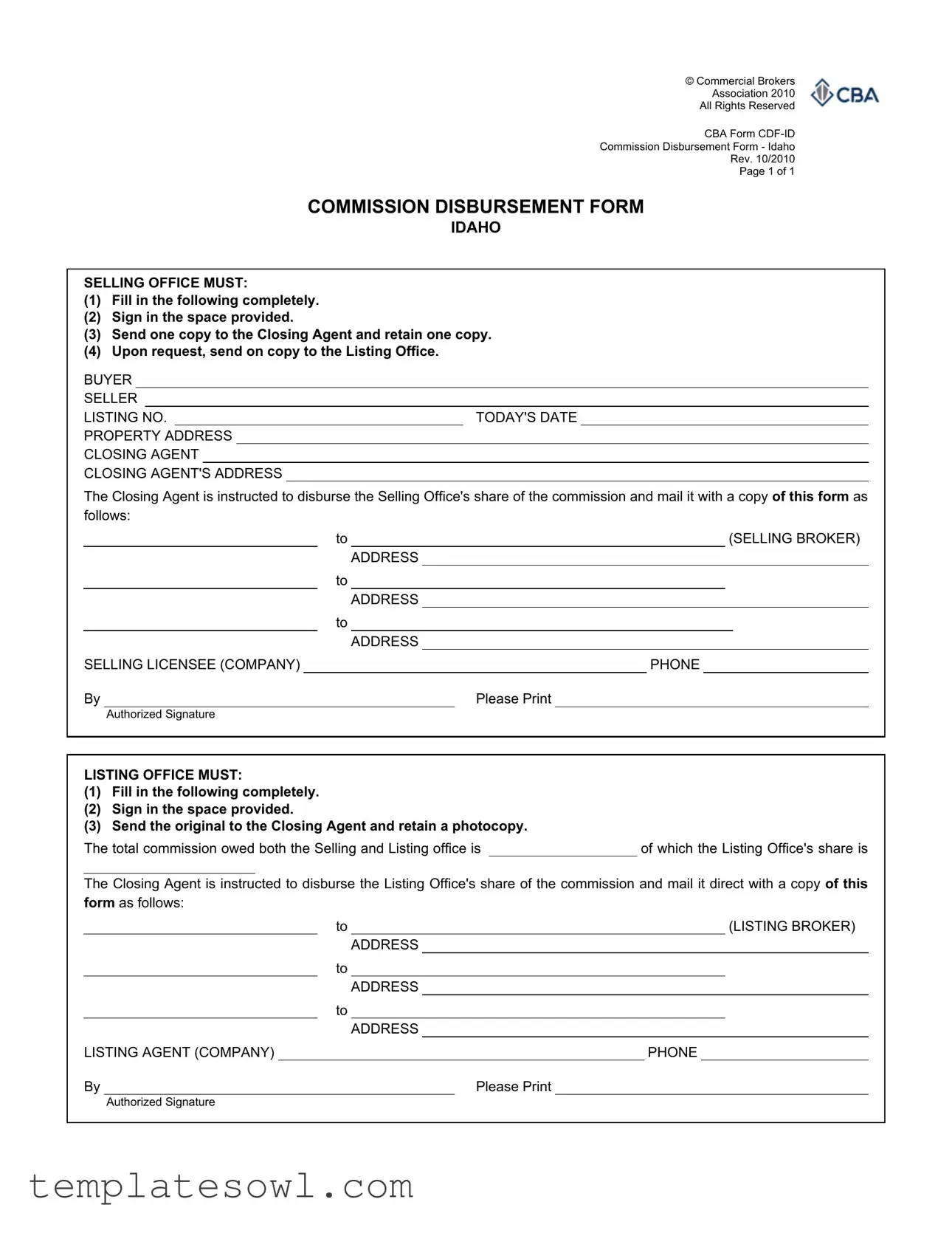When completing the Commission Disbursement form, individuals often overlook critical details that can lead to delays or complications in the disbursement process. One common mistake is leaving sections incomplete. Each box must be filled out entirely, including the names of the buyer and seller, the listing number, and the property address. If any information is missing, the form may be rejected by the closing agent.
Another frequent error is the lack of required signatures. Both the selling office and the listing office must sign in the designated spaces. Failing to provide these signatures can render the form invalid. Ensure that all parties involved verify their signatures before submission.
Many people also underestimate the importance of retaining copies of the form. After sending a copy to the closing agent, it is essential to keep a photocopy for personal records. This practice ensures that you have the necessary information on hand if there are questions or disputes later on.
Inattention to the mailing instructions is another area where mistakes occur. The form should clearly specify how to disburse the commission. Any ambiguity in addressing the payment could lead to funds being sent to the wrong party. Clarifying the designated recipients is vital for a smooth transaction.
Calculation errors can also take place when determining the total commission owed. It is critical to verify the total amount and the respective shares for the selling and listing offices. Inadvertently miscalculating these figures can delay the disbursement and create confusion among the parties involved.
Some individuals may neglect to submit additional required documentation. In certain cases, the closing agent may require other supporting documents alongside the commission disbursement form. Always check if any extra information needs to be provided to avoid scene disruptions.
Additionally, failing to provide correct contact information can cause unnecessary complications. Ensure that the phone numbers and addresses for all involved parties are accurate. Incorrect details can result in difficulties in communication during the transaction process.
Finally, procrastination is a mistake that can have serious consequences. Submitting the form promptly is essential. Delaying this process can significantly impact the disbursement timeframe, affecting cash flow and in some cases, the closing of a deal. Timely submission should always be a priority.

